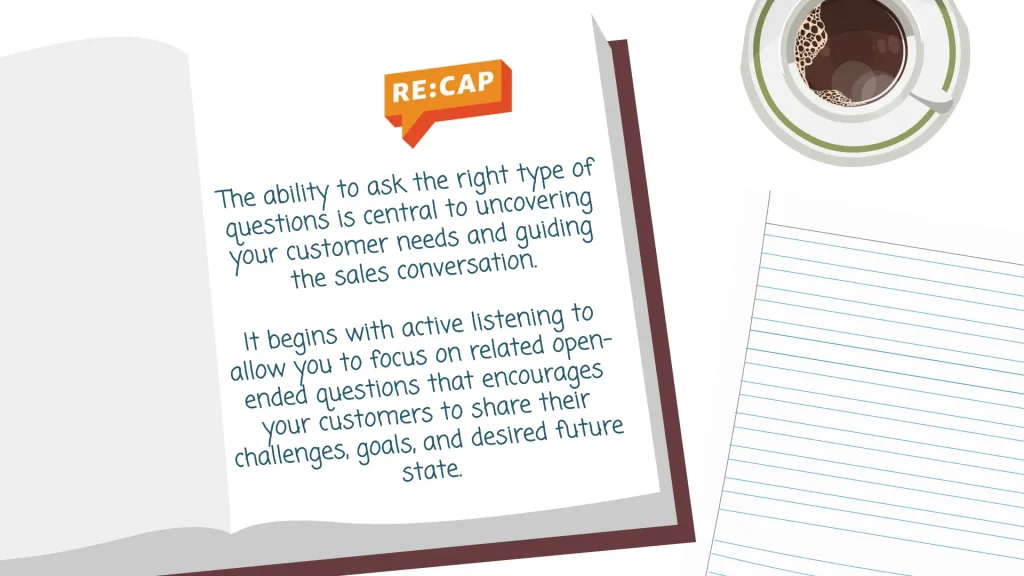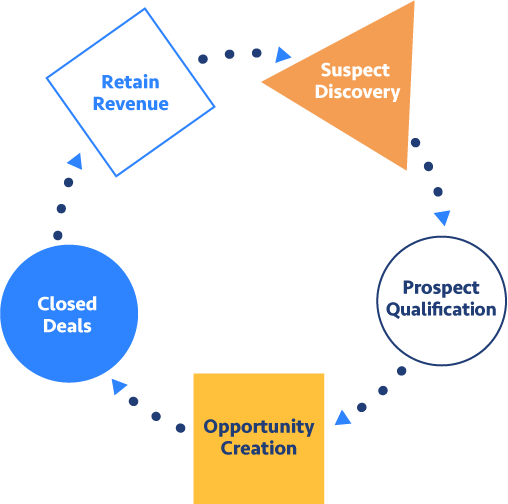A guide to closing sales with ABC, or “Always Be Closing,” is a learning journey for salespeople looking to improve their sales performance, or “Return on Sales Effort (ROSE). Closing sales is about consistently moving customers towards a desired action or outcome. To keep the sale moving forward to a successful conclusion, salespeople need to gain a series of commitments from the customer.
In this guide, we will explore proven strategies that can help you close more sales and achieve your goals. From assumptive and urgency closes to fear of loss and alternative closes, we include practical examples and insights to enhance your closing skills. Whether you’re a seasoned sales professional or just starting out, this guide will equip you with valuable techniques to confidently navigate the closing process and secure successful deals.
What does ABC, or ‘Always Be Closing’ really mean? Does it mean being a pushy salesperson—pressuring the customer to decide? Not necessarily. Irrespective of what kind of salesperson you are, you must master the sales skills of closing the deal to win more sales.
Points to consider to close more sales.
Product Knowledge
Salespeople must have a deep understanding of the products or services they are selling, including features, advantages, and benefits, also known as FAB. This knowledge will help them to deal with customer questions and overcome any objections that get in the way of closing.
Communication is a soft skill.
Soft sales skills, such as communication, are essential to selling and closing effectively. Salespeople should master active listening, clear and concise speaking, and adapting their communication style to the customer’s personality without being false.
Handling sales objections.
It is rare in closing sales that no objections or obstacles pop up. In fact, salespeople should expect them. They must learn to anticipate and deal with objections, such as price or why a change is needed, to boost their chances of closing the sale.
Master different closing techniques.
Successful selling results in sealing a deal and closing the sale. Salespeople should master the various closing techniques, such as the “1-2-3 close,” “direct ask,” “assumptive close,” or “alternative close.”
Focus on outcomes.
Sales happen when the future state is better than the customer’s present situation. So, salespeople need to focus on the outcomes—the end result—rather than just the features. It’s about painting a story highlighting how the product or service can meet the customer’s needs and improve their life. A focus on outcomes can make a more compelling case for why the customer should buy.
Build rapport and trust.
Decision-making is both logical and emotional. People buy from people they like, trust, and believe are credible. So, building rapport and trust is essential when it comes to closing sales. It is the foundation of any successful sale. Salespeople who build rapport and trust with their customer’s create a connection with them and show them that they care about their needs. The modern buyer has to believe in what the salesperson is offering, and they have faith in their ability to deliver.
Closing Sales Techniques
The Assumptive Close
This technique assumes the sale is more about confirming than closing due to the commitments gathered in the sales process. Use language that assumes their commitment, such as, “So, when would you like to have it delivered?” or “Let’s discuss the onboarding for your team.”
Direct Question Close Technique
This closing technique involves asking a direct question, such as, “Are you in a position to decide today?” It’s a straightforward approach that prompts the customer to make a decision. It is effective when used by a salesperson who displays confidence and is deployed at the right time in the sales process.
The Urgency Close
This technique works best where there is a genuine offer or some time-limited event, such as end-of-quarter discounting. Creating a sense of urgency can motivate buyers to take immediate action. For instance, you can mention that there is an end-of-month special or an introductory offer available for the next week only. The urgency close only works where the customer already sees the value, and this is an incentive to decide now.
The Summary Closing Technique
Closing sales with this technique involves summarizing the key points uncovered and gaining agreement from the customer as the dots are connected. The customer is relayed a story of where they are and how things could get better upon using the product. This closing technique works best when salespeople have gone through an extensive discussion and evaluation. Summarize the reasons to act now based on facts and needs.
The Sales Objection Close
This type of sales close works best with those buyers who remain uncommitted or non-responsive. If a decision is vague, it means the buyer has concerns about the proposed solution. To stimulate a deeper conversation, the salesperson asks them for any objections they might have to the product. What concerns do they have? What is stopping them from moving forward? This approach allows the prospect to raise any objections or doubts that they have so the salesperson can handle them and get agreement.
The Fear of Loss Close
FOMO, or fear of missing out, capitalizes on a buyer’s fear of missing out to drive engagement, urgency, and action. This technique focuses on the potential negative consequences of not deciding or the cost of inaction. The salesperson can highlight the cost of delaying or the risk to the business by staying the same. This is a very challenging type of sales technique, so the salesperson needs to have their case well prepared to look credible when asking FOMO questions.
The Alternative Close
Presenting two or three desirable solutions can help the buyer feel in control of the decision while still leading them towards a sale. Provide choices that lead to a positive outcome. For this to work successfully, the salesperson needs to make sure that all options are appealing and meet the needs of the buyer. They should recap the buyer’s previous statements, challenges, or preferences to guide the options presented.
The Empathy Closing Technique
Closing sales with the empathy closing technique allows the salesperson to use emotion to signal they understand the customer’s situation. When the customer says that they aren’t ready to decide, back off and give them time to think. This tactic will show that the salesperson really cares about making the right choice and that they are not just there to push any old solution.
Empathizing with a customer’s position can help build a bond and a relationship, which can pay off in the long run. The reality is that buyers are smart, informed, and in control of the buying process. They are switched on to closing techniques because they have been employed by undertrained salespeople so often or are not respectful of their time, needs, or wants. So, for salespeople to cater to the modern buyer, they’ll need to master using soft sales skills such as empathy in sales conversations.
The Social Proof Close
This closing technique uses case studies, independent research, customer testimonials, and success stories to build trust and credibility. The salesperson shares stories of real customers and offers to provide proof or evidence. Social proof works by giving comfort and assurance to a customer that a buying risk is manageable. They feel reassured they are in good company, especially if the proof is from sources they perceive as credible, trustworthy, or similar to themselves. It is a powerful psychological tool that can influence your prospects’ decisions and help you close more sales.
The Opportunity Cost Closing Technique
As mentioned before, there is a cost of inaction or the opportunity cost of passing up on something. This closing sales technique taps into the pain or consequences by stressing what the customer will miss or the impact on their situation if they do not implement something now.When the salesperson uses this technique, they focus on ROI, the investment, and future proofing their position or business. The salesperson points out that the value extracted from the proposal far outweighs any investment via improved efficiency, reduced costs, boosting productivity, etc. The sales story should make the customer realize that the longer they take to decide, the greater the exposure or risk.
Why are closing sales techniques important?
Closing sales techniques are important because they help salespeople achieve their sales goals. The reality is that no sales equals no customers. Closing sales impacts all areas of the sales strategy and goes beyond merely selling. It impacts the company’s cost of sale, cost of customer acquisition, market share, product-to-market fit, go-to-market tactics, and profits. Lastly, it kicks off lasting business relationships, as closing sales proves that the salespeople had the sales training and selling skills to establish lasting business relationships with customers and build trust in the company.




